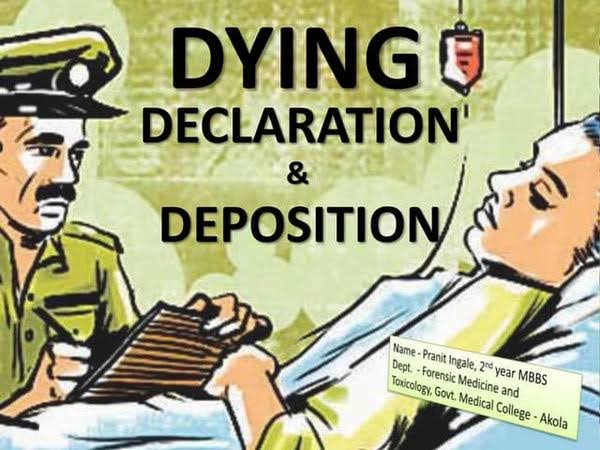Mahesh Grover, J.@mdashThis Regular Second Appeal has been directed against the judgments and decrees dated 2.3.2007 and 16.12.2008 passed respectively by the Civil Judge (Junior Division), Kurukshetra (hereinafter described as ''the trial Court'') and the District Judge, Kurukshetra (referred to hereinafter as ''the First Appellate Court'')- The trial Court has partly decreed the suit of the plaintiff-respondent and also partly accepted the counter-claim of the defendant-appellant, whereas the First Appellate Court has dismissed the appeal filed by the appellant.
2. A suit was filed by the respondent, which is Gram Panchayat of Village Jhansa, Tehsil Thanesar, District Kurukshetra, for permanent injunction restraining the appellant from changing the present nature of the suit land either by raising construction or in any other manner, forcibly and illegally. The respondent averred that it is a statutory body and has authorised its member, Shri Hans Raj Narang, to institute the suit and that it is owner in possession of the land described in the suit where exists a Kutia on two kanals and there is a Dera Smadh and the rest of the land, i.e., 5 kanals 8 marlas was under cultivation, whereas one kanal was lying vacant. It was claimed by the respondent that the appellant has no right, title or interest in the suit land and he was only deputed by the villagers to look after the Dera, but he has exceeded his right and encroached upon the suit land by raising construction of shops etc. forcibly and illegally. It was alleged that the appellant was trying to raise more construction and, therefore, he be restrained from doing so.
3. Upon notice, the appellant appeared and filed his written statement- counter claim contesting the suit and denying the averments of the respondent. It was pleaded that he is Mahant of Dera, namely, San gat Sahab Sachi Dari Jhansa''; that the Dera has a building in which a Smadh and ''the pious Darbar Sahib'' exists including the Murties (idols); that Samadh and Darbar Sahib of the Dera exists in the same position from time immemorial; that the appellant had no locus standi to file the suit; that the appellant was not in possession of the suit land, whereas the Dera Samadh Sangat Sahib has been shown to be in the possession in the khasra girdawari; that the land in question was being used for various purposes; that the construction which was referred to by the appellant was a matter of necessity because the dirty water of the village started entering the Samadh and was an attempt to remove this problem. On the basis of these averments, the appellant had prayed that the respondent be restrained from interfering in the working of the Dera.
4. Both the parties went to trial on the following issues:
1. Whether plaintiff is owner in possession of suit land mentioned in para No. 2 of plaint? OPP
2. If issue No. 1 is proved, whether plaintiff is entitled to a decree for permanent injunction as prayed for? OPP
3. Whether Mahant of the Dera cannot be impleaded personally? OPD
4. Whether plaintiff has no locus standi to file the present suit? OPD
5. Whether plaintiff can be restrained from damaging the construction of the Dera Samadh and from interfering in the peaceful possession of Dera? OPD
6. Relief.
After appraisal of evidence on record, the trial Court, as noticed above, partly decreed the suit and partly accepted the counter-claim of the appellant. While doing so, it restrained the appellant from changing the nature of land measuring 5 kanals 8 marlas by raising construction or in any other manner out of the land measuring 7 kanals and 8 marlas, but in so far as the possession of the appellant qua 2 kanals of land was concerned, that was protected on the premise that a kutia existed thereon.
5. In appeal, She finding of the trial Court were affirmed by the First Appellate Court.
6. Hence, this Regular Second Appeal.
7. Learned Counsel for the appellant referred to the provisions of Section 2(g) (i) and (ix) of the Punjab Village Common Lands (Regulation) Act,1961 (for short, ''the Act'') and contended that the land which was being used as a place of worship or for purposes subservient thereto, was precluded from the purview of ''shamilat land'' and, therefore, the respondent had no right to file a suit qua the disputed land. He further contended that the revenue entries showed she land in question to be ''Jumla Mustarka Malkan Hasab Rasad Khewat, implying thereby that it belonged to the proprietors of the village till its partition. It was also submitted that since the land in dispute belonged to the proprietors, the respondent could not have invoked the jurisdiction of the Civil Court.
8. I have thoughtfully considered the contentions of the learned Counsel for the appellant and have perused the record. Section 2(g)(i) and (ix) of the Act, which defines the shamlat land, reads as under:
2. Definitions.- In this Act, unless the context otherwise requires,:
(a) to (f) xx xx xx xx xx xx xx
(g) ''shamilat deh'' includes:
(1) lands described in the revenue records as Shamilat Deh or Charand excluding abadi deh;
(2) shamilat tikkas;
(3) lands described in the revenue records as shamilat, tarafs, pattis, pannas and tholas and used according to revenue records for the benefit of the village community or a part thereof or for common purposes of the village;
(4) lands used or reserved for the benefit of village community including streets, lands, playgrounds, schools, drinking wells or ponds situated within the sabha area as defined in Clause (mmm) of Section 3 of the Punjab Gram Panchayat Act, 1952, excluding lands reserved for the common purposes of a village u/s 18 of the East Punjab Holdings (Consolidation and Prevention of Fragmentation) Act, 1948 (East Punjab Act, 50 of 1943), the management and control whereof vests in the State Government u/s 23-A of the aforesaid Act; and
(4a) vacant land situate in abadi deh or gorah deh not owned by any person;
(5) lands in any village described as banjar qadim and used for common purposes of the village according to revenue records;
but does not include land which:
(i) to (viii) xx xx xx xx xx xx xx xx xx
(ix) is used as a place of worship or for purposes subservient thereto;
A reading of the above quoted provisions of law reveals that the land which is used as a place of worship and for purposes subservient thereto is not shamlat deh. However, it is to be seen as to whether the land in disput is shamlat deh or not on the basis of the evidence on record.
9. Hans Raj Narang, the member of the respondent, who was authorised by it to file the suit, had stepped into the withness box as PW1 and admitted that there is a kutia and a Dera Samadh on the land in dispute, whereas the rest of the land was under cultivation.
10. Both the Courts below have noticed the entire evidence on record and referred to the same, more particularly to the testimony of PW1.
11. Reference to the jamabandi for the year 1968-69 (Exhibit P1) has also been made by the Courts below wherein a kutia was shown to be in existence only on one kanal of land, but the appellant was alleged to have encroached upon 2 kanals as per the jamabandi for the year 1998-99 (Exhibit P2). There is also evidence to suggest that there were idols placed in the kutia and Sangat Sahab Sachi Dari was also inside the Samadh.
12. PW1-Hans Raj Narang has also admitted in his deposition that a fair was held in the vacant area in front of kutia which was organised by the appellant. More importantly, he admitted that the appellant was not interested in taking back the entire land of the area, but was interested in taking the vacant land which was being used for cultivation etc.
13. The oral evidence of the respondent was matched by the oral evidence of the appellant and ultimately, the Courts below recorded a finding of fact by referring to site plan Exhibit P3 to hold that Mandir and Darbar Sahab and some rooms existed on a part of the suit land as shown in red colour, whereas the remaining land shown in blue colour was lying vacant and was being used for cultivation of grass etc. It was further held that the vacant land was also being used by the worshippers of the Mandir at the time of holding fairs and Bhandaras.
14. In this view of the matter, a pure question of fact has been determined by the Courts below to hold that only 2 kanals of land was the area which was being used as place of worship where the kutia and other structures existed.
15. The plea of the appellant could have been tested only if he had established by way of evidence that the vacant land was being used as place of worship, but in the absence of such evidence, the same has been rendered mere academic.
16. The finding of fact regarding 2 kanals of land being in possession of the appellant and which is being used for religious purposes, cannot be faulted with in the absence of any other evidence to the contrary.
17. There is, thus, no infirmity in the findings recorded by the Courts below and no substantial question of law arises for determination in this appeal, which is held to be without any merit and is dismissed.

